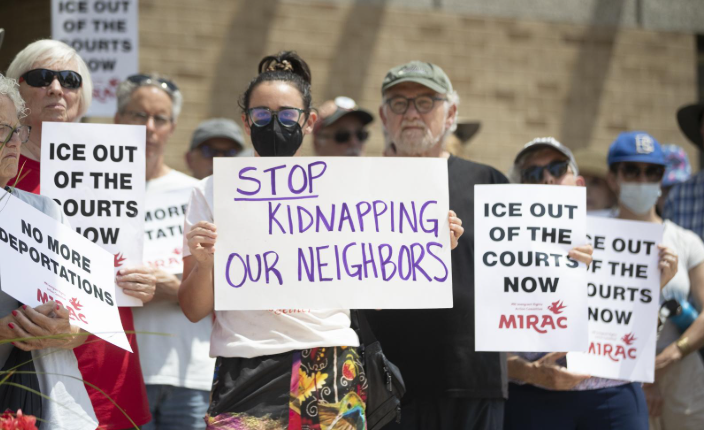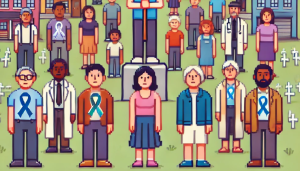
Only 2 in 10 Migrants Feel Safe Seeking Care
Last spring in Phoenix, a community clinic reported a sharp decline in migrant families bringing in their children for routine care. The reason wasn’t a sudden improvement in health. It was fear. Parents worried that seeking care would expose them—or their loved ones—to immigration authorities.
This example illustrates a broader reality. Migrants make up over 14% of the U.S. population, yet many avoid medical care due to immigration laws, policies, and the hostile rhetoric that surrounds them. A new policy brief by Carol Galletly and Dulce Ruelas in Frontiers in Public Health highlights how this “troubled immigration environment” undermines health and what actions public health leaders can take to respond
Why Immigration Policy Matters for Public Health
Immigration policy is no longer a distant issue for Washington insiders; it’s a frontline concern for health departments and clinics. In the first 100 days of 2025 alone, more than 66,000 migrants were detained and over 65,000 removed from the U.S.8. Meanwhile, debates and executive orders have painted migrants as criminals or burdens, fueling stigma and fear.
The result: stress-related illness, reduced trust in health providers, and fewer people seeking services—even when they’re eligible. Research has documented chilling effects such as:
- Arizona’s “show me your papers” law worsened self-reported health among Spanish-speaking residents.
- Declines in Medicaid use by migrant families in Texas, where parents worried information might be shared with immigration enforcement.
- Fear-driven drops in healthcare use that persisted even after restrictive rules were overturned.
In short, perception matters as much as policy. When communities believe health visits could harm their immigration status, they stay away.
Who Is Affected? More Than the Undocumented
The study makes clear that this issue extends far beyond undocumented migrants. People with temporary protected status (TPS), Deferred Action for Childhood Arrivals (DACA) recipients, and even U.S. citizens of non-European descent may avoid care due to fear of profiling, data sharing, or deportation of loved ones. Many families live in “mixed status” households, where one parent’s undocumented status places the whole family on edge.
This creates a ripple effect: fewer vaccinations, untreated chronic disease, delayed emergency care, and widening health disparities.
What Public Health Can Do: Three Practical Steps
The good news is that public health agencies, clinics, and nonprofits can take action. Galletly and Ruelas highlight three areas where interventions matter most:
1. Clarify the Role of Health Providers
Misinformation fuels fear. Many migrants assume clinics are required to report undocumented patients to Immigration and Customs Enforcement (ICE). Agencies should make it clear—through posters, intake forms, and outreach—that healthcare providers are not immigration enforcement agents. Even avoiding official government logos can help reduce perceived risk.
2. Protect Confidentiality
Confidentiality fears are widespread, and recent breaches—such as states releasing Medicaid data to identify undocumented residents—have made them worse. Providers should explain what protections exist, minimize unnecessary data collection, and advocate for stronger privacy laws. Assuring patients that their personal health information won’t be shared without consent is critical for building trust.
3. Clarify Eligibility for Services
Confusion about eligibility is common. Some migrants believe they are ineligible for services when in fact they are entitled. For example, Federally Qualified Health Centers (FQHCs) must provide care regardless of immigration or insurance status. Outreach campaigns can clarify who qualifies for what, in plain language and multiple languages, reducing fear-driven underuse.
Why This Matters for Practice Today
For public health leaders, the lesson is clear: immigration policy isn’t just politics—it’s a health determinant. Clinics and health departments need to:
- Proactively communicate rights and protections.
- Partner with trusted community organizations to share accurate information.
- Train staff to recognize and address fears rooted in immigration status.
This work directly connects to broader frameworks in public health: advancing health equity, addressing social determinants of health, and ensuring access to care for all residents.
Barriers and Challenges Ahead
Of course, challenges remain. Policy environments are dynamic, with shifting federal rules, court cases, and state-level actions. Misinformation spreads quickly, often faster than corrections. And public health organizations may feel stretched thin, with limited capacity for legal monitoring or multilingual outreach.
Coalitions can help here. By pooling resources, agencies can access immigration law expertise, develop consistent messaging, and coordinate advocacy for stronger privacy protections.
What’s Next? Preparing for Escalating Hostility
The brief warns that hostile discourse and restrictive laws are likely to continue—or even escalate—in the coming years. Public health must prepare for these cycles. That means embedding migrant health considerations into emergency preparedness, community outreach, and policy advocacy.
As one clinician put it at a recent NACCHO conference: “If our patients are too scared to walk through the door, the best medicine in the world won’t help them.”
Join the Conversation
This study reminds us that the health of migrants is the health of our communities. As public health professionals, we can act now to protect access, trust, and well-being.
Questions to reflect on:
- How could your agency make confidentiality and non-enforcement policies clearer to patients?
- What partnerships could help spread accurate information in multiple languages?
- Does this research challenge how you think about prevention and access in immigrant communitie



